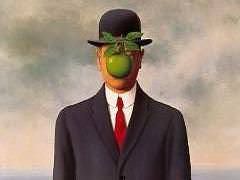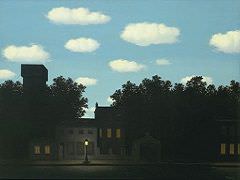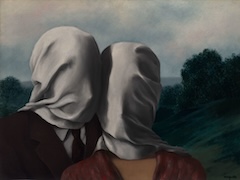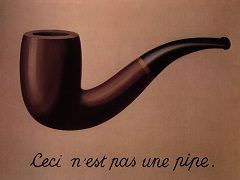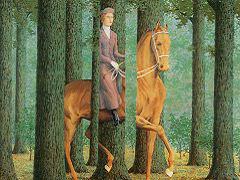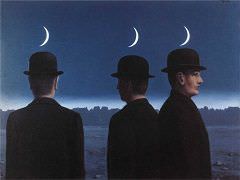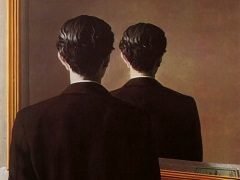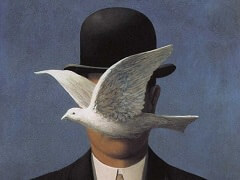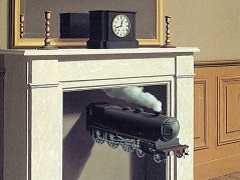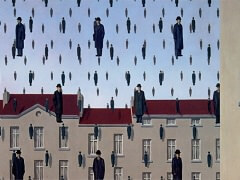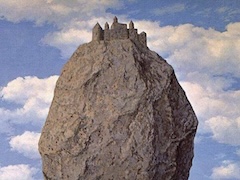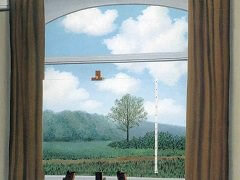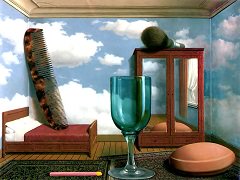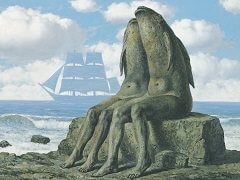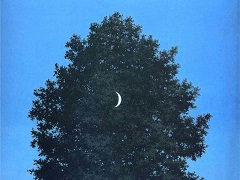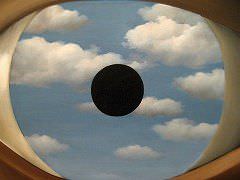The Muscles of the Sky, 1927 by Rene Magritte
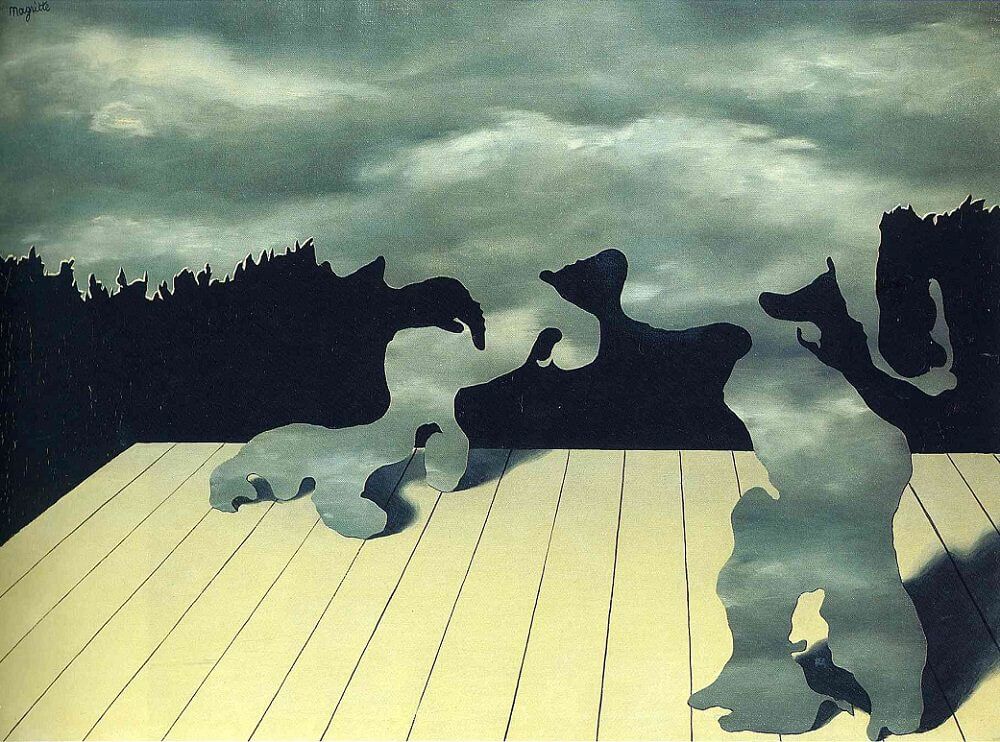
Magritte's first painting done in Paris in 1927 The Muscles of the Sky transposes 'sky' into an alternative pictorial element, the Albertian 'pavement' in this case, so a portion of sky breaks away from the far distance, crosses the black middle distance and anchors itself to the foreground. This immediately contradicts the depth that the receding pavement insistently conveys. As a result, the principal function of the pavement, to accommodate objects and to establish their recession in space, is overridden by spatial instability. Solid objects have no place in this environment and, not surprisingly, Magritte omits them altogether. The subject of the painting is the 'legs of the sky' as Magritte had put it. They hint at the characteristics of wood: they have clear-cut outlines, they cast shadows and, in all respects, conform to the idea of a rigid plane. But also, like sky, they have a furling, unspecifiable configuration. Quite unlike flat planes, they make contact with the pavement at various points in depth. In effect, they are implicit zones of 'melting', places where contradictory meanings are fused.
What is significant, moreover, is that such loci of representational contradiction, where finite plastic interpretation becomes impossible, are not rendered as an imprecise blurs or as haziness. On the contrary, they are independent entities in the painting. The Muscles of the Sky presents the paradoxical constituent as a 'limb' attached to a larger corpus. Even if, one would imagine, the final severance were made and the limb allowed to exist freely, it would still have finite presence. Magritte, therefore, invokes the notion of free units of meaninglessness that, nevertheless, can inhabit a fully articulated pictorial space. It is in this way that Magritte's 'discovery' could be seen to have ultimately resulted in a transition from planes to 'blobs', a term coined by Robert Roseblum. Planes, it has been shown, had been first isolated and then fused, with the result that a paradox of 'substance' was brought about. The ensuing pictorial contradiction was then seen to lead an absence of representational meaning. Finally, the resulting state of zero representation was seen to acquire autonomy within the painting. Having reached this point in his progressive denudation of representation, Magritte is in a position to advance the concept of paintings peopled wholly by semantically dysfunctional elements.

